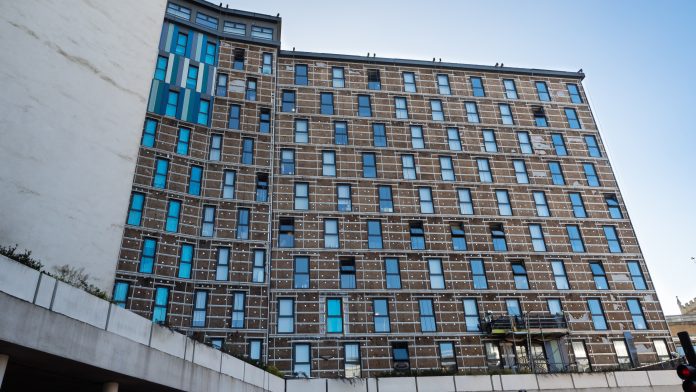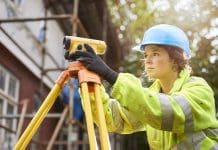Only 149 of the 456 high-rise buildings over 18 metres which have unsafe ACM cladding have been fully remediated, according to a new report by the National Audit Office (NAO)
The NAO report reveals that while progress is being made to remove dangerous cladding from high-rise residential buildings, the pace of works has been slower than the government expected.
The pace of remediation works has been faster in some types of building than others and progress in the private residential sector has been slower.
In the wake of the Grenfell Tower fire, the ministry of housing, communities & local government (MHCLG) established the Building Safety Programme. One of the safety programmes main objectives is to ‘oversee and support the remediation of high-rise residential buildings that have unsafe aluminium composite material (ACM) cladding’.
In May 2018 the MHCLG announced £400m to fund remediation in the social housing sector in England. In May 2019 it announced a further £200m for the remediation of equivalent high-rise buildings in the private housing sector.
However, by April 2020, 149 of the total 456 buildings which are 18 metres and above and have unsafe ACM cladding systems had been fully remediated, leaving 307 where remediation was not yet finished, of which work had not yet begun on 167, according to the report.
Pace of cladding remediation
The pace of remediation has been fastest in the student accommodation and social housing sectors, but slowest in the private residential sector.
By April 2020, 66.7% of student accommodation blocks and 46.8% of social housing buildings had been fully remediated, compared to 13.5% of private sector residential buildings.
Progress in the private sector has been slower because those legally responsible for private buildings have been difficult to identify and have required more support than expected.
By the end of April 2020, the MHCLG had paid out £1.42m from the £200m private sector fund and £133m from the £400m social sector fund.
The housing department estimates that all buildings within scope of its funding will be remediated by mid-2022, with over 95% completed by the end of 2021. This is later than the expectation set in July 2019 by the then secretary of state, that “other than in exceptional circumstances, building owners should complete remediation […] by June 2020.” This does not take account of the impacts of Covid-19 – there are early signs that the epidemic has slowed the pace of remediation, with up to 60% of projects that were under way paused by April 2020.
Funding flaws
Not all buildings with dangerous ACM cladding fall within scope of the government’s existing funding schemes for the social and private housing sectors. This includes high-rise hotels, student accommodation, and build-to-let blocks, as well as buildings below 18 metres.
The MHCLG is aware of seven build-to-let properties over 18 metres with unsafe ACM cladding which are not eligible for funding, because the private sector funding scheme is designed to avoid the costs of remediation being passed on to leaseholders. In the case of build-to-let properties, the MHCLG says that building owners have a clear legal and financial obligation to pay for remediation themselves.
The department’s Independent Expert Advisory Panel has advised that the most dangerous forms of ACM cladding are unsafe on buildings of any height, and that risks are increased in buildings with elderly and vulnerable residents.
The MHCLG estimates there to be around 85,000 buildings in England between 11 and 18 metres, but does not know what cladding systems they have, or whether there are any care homes under 18 metres with unsafe cladding. It will begin collecting data on buildings between 11 and 18 metres in summer 2020.
To access the funding schemes, building owners must demonstrate they have made a reasonable attempt to meet or recover costs without having to charge leaseholders – for example, by paying from their own resources, or through insurance, warranty claims or legal proceedings.
The government expects it could take building owners several years to recover costs in legal proceedings in many cases. By February 2020, the MHCLG had recouped £0.8m from the private sector, and a further £6.4m from the social sector where building owners had successfully reclaimed costs from original contractors.
It expects to pay for 94 projects (out of 208) in the private sector, where the developer or building owner has not agreed to fund remediation themselves. The owners of 84 private sector residential buildings have committed to fund remediation, with a further 23 self-funded through warranty claims. Seven buildings have not agreed a funding route. In the social sector, the Department has committed to fund 139 (out of 154) residential buildings.
‘Lagging behind’
Gareth Davies, the head of the NAO, said: “MHCLG has made progress in overseeing the removal of dangerous cladding from many buildings, particularly in the social housing sector.
“However, the pace of progress has lagged behind its own expectations, particularly in the private residential sector. It has a long way to go to make all high-rise buildings safe for residents.
“Going forward, it is important that the department successfully manages the administrative challenges of funding building owners to carry out remediation work, particularly given its intention to commit a further £1bn in full by the end of March 2021.”














